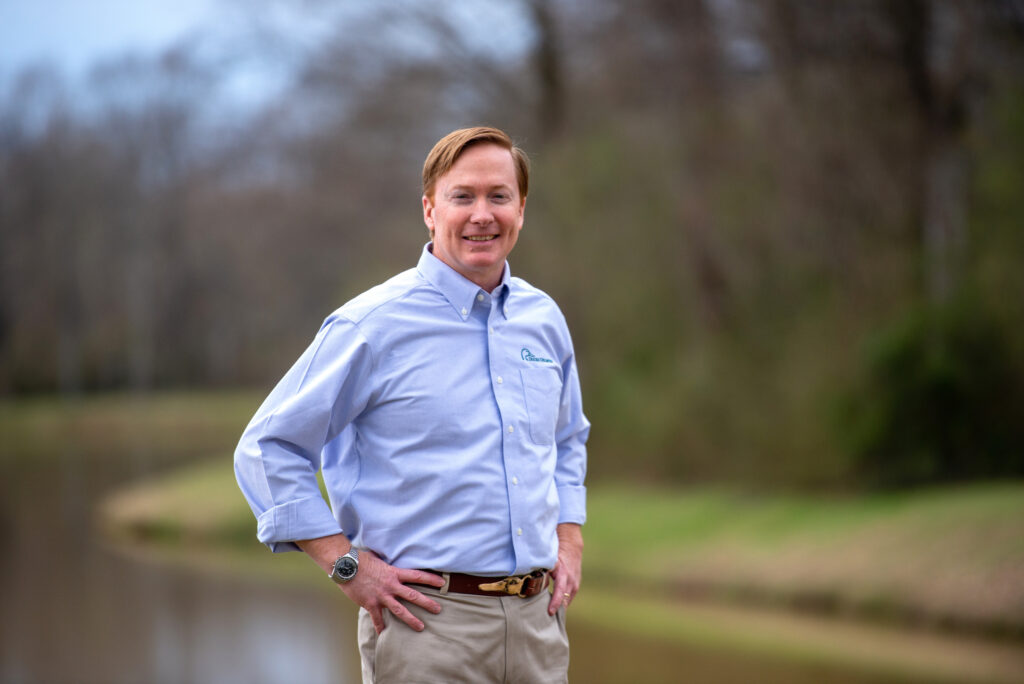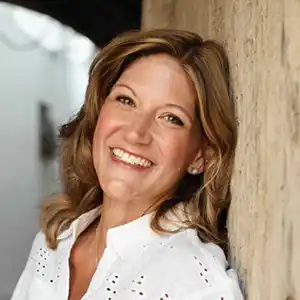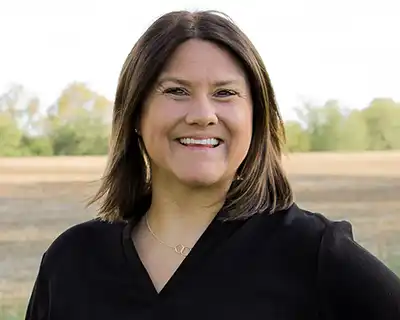
Throughout 2021, Trust In Food is inviting leaders of the Foundational Partners of America’s Conservation Ag Movement to share their vision for the future of conservation and sustainability in U.S. agriculture. In this post, we spotlight Adam Putnam, CEO at Ducks Unlimited, a Founding Partner of ACAM.
Tell us a bit about yourself. What have you been learning in your role as CEO of DU after spending earlier chapters of your career directly in farming and later as agriculture commissioner for the state of Florida? How did those earlier experiences shape what you do today, and how does that commitment to conservation inform how you show up to work each day?
I am a fifth-generation farmer and rancher, and a self-described land-grant baby—growing up in 4-H, going to a land-grant university, getting an ag degree and going back into the ag industry.
The overlap of issues in ag and conservation is startling:
- The challenges of a society that doesn’t understand outdoor activities;
- The connection to nature has been severed;
- The declining understanding and interest in society writ large in what we do and how we do it and why we do it;
- The aging out of the participants
All of those things are strikingly similar issues, and of course as any farmer recognizes, we are the original conservationists. The notion of leaving the world better than we found it, leaving the land better we found it, is in our genetic makeup.
I view my role at DU—and I’ve been here right at two years now—I see the opportunity for us to more fully align with agriculture, which is under great social pressure, supply chain pressure, regulatory pressure to quantify benefits beyond feeding a hungry planet. That used to be sufficient, but it’s not anymore. We can align the needs and interests of the farmer with the demands of all these other parties.
I think DU is the logical trusted partner of the American farmer and rancher to solve those problems and continue to be profitable to feed the world. They’re not contradictory aims.
What’s one book you’ve read recently that’s challenging how you think about conservation or the future of food and agriculture?
When I first took the job and relocated from Florida to the heart of the Mississippi Alluvial Valley, I read “Rising Tide,” which is just an extraordinary work about how the U.S. Army Corps of Engineers reshaped the entire center of the country through their work on the Mississippi River, and the influence that had on populations, on agriculture, on nature, on wildlife—the climax being built around the Great Flood of 1927.
We are still engaged in policy debates on the consequences of everything that was done that that book focused on. It was eye-opening to me to better understand the entire center region of the country. I’ve just started Sarah Frey’s book, “The Growing Season.” I consider her a friend.
In a sentence, describe Ducks Unlimited for executives in our audience who are unfamiliar with your work.
DU is North America’s leading wetlands conservation organization – that’s the shortest sentence I can give you. If I get another two sentences, I would say it was founded by waterfowlers in the Dust Bowl to protect wetland habitat for the benefit of waterfowl. Since that time, we’ve all recognized the other benefits, which are many, of wetlands conservation to nutrient management, flood mitigation, coastal resilience, in addition to benefits for ducks and humans.
What is the biggest conservation challenge your organization is facing, and how are you navigating possible ways to address and overcome that challenge?
In a sense, one of the greatest challenges conservation faces is the declining number of people participating in hunting activities, and the aging out of that population. The caveat to that is that COVID has changed that calculus, and it remains to be seen whether it’s changed it permanently or whether it was temporary.
As much as COVID took away from us, one of the things it has given American society is a new appreciation for being outdoors, and for that reason, we’ve seen empty shelves of fishing rods, kayaks, canoes, crowded parks and refuges and hiking trails. All of that is positive. If in fact we’ve seen a reset of young children who could not go to school—and parents who couldn’t go to the office—create new family experiences outdoors, we may well have seen a reversal of this decades-long decline in interest in outdoor activities. The jury’s still out on that.
Another challenge is that DU prides itself on being a common-sense, solutions-oriented, centrist conservation organization in a world that seems to value polarization. We’re not changing who we are, but in a very loud, frantic world, we need to make sure there’s room in the center for common-sense solutions.
Can you share a bit about the new National Agriculture Strategy that Ducks Unlimited has developed, and explain the process underway regionally to define and implement actions to fulfill that strategy on the ground? Help our audience better understand the kinds of agricultural systems/geographies with which DU conservationists work.
DU values partnerships. We would rather partner with people than sue them, which differentiates us from other environmental organizations. We know that farmers and ranchers host the greatest biodiversity on private lands that also pay taxes, employ people and feed the planet. It’s the most successful farm and ranch operations that are also the most conservation-minded, the most sustainable and the greatest stewards of the natural resources. The future of our mission is inextricably linked to the future of American agriculture.
It is essential that our organizational culture be aligned with the culture of the farmer and rancher who will welcome us onto their land, engage in a dialogue that helps both parties and results in solutions that are mutually beneficial. For that reason, we have really gotten very deliberate about an agricultural strategic plan for each of the regions of the country to identify those partnerships, cultivate those relationships, build that trust and act on those solutions.
It’s a little bit different in Southeast Louisiana than it is in California’s Central Valley, which is different than the Great Plains. But in every one of those landscapes, we view the farmer and rancher as our friend, our ally and our partner in helping solve the bundle of issues they face, and that we in society face in terms of the conservation movement.
As the challenges of the COVID-19 pandemic lessen here in the U.S., what has DU learned from that experience? What will change as far as the execution of the DU mission with farmers with lower COVID-19 risk in many areas, and what changes adopted during 2020 will remain? Why?
We’re a grassroots organization and derive an awful lot of support from over 4,000 grassroots events in small towns and big cities all across the country. With a few exceptions, that dried up overnight in March of 2020. We had to quickly learn and adapt to communicate with our members, reach out to members and fundraise in online and virtual events, and I’m real proud of how our team was quickly able to adapt to a new environment. The fact the whole planet had to do it certainly helped. We didn’t have to teach people how to Zoom because everyone had to Zoom at the same time, everyone had to hit that mute button. Our team was able to do that and survive—in fact, do better than survive in the COVID situation.
We learned a lot about how to be entrepreneurial, even as a nonprofit. We learned how to weave technology into more of what we do, not as an add-on but as a core competency in every aspect of our work. We were able to accelerate our conservation delivery. We set a new record of acres conserved, over 600,000 acres in one year, in the midst of COVID because, in some way, we were able to accelerate projects with people out of the way. We’re proud of the fact we were able to keep our people safe and healthy, and we learned how to operate remotely, and a lot of those lessons will be with us well beyond putting COVID in the rear-view mirror. In very many aspects, there won’t be a “back to the old way,” there will be a new normal, not a pre-COVID normal. We see that in everything.
That was really how we got through it. Farmers and ranchers, they didn’t have a lot of those luxuries. They’ve still got to be on the landscape, in the dirt, with your animals, hitting market windows, and we all certainly learned where the chokepoints were in the supply chain. But while Americans were short of hand sanitizer and toilet paper, they were not short of food. It is a powerful reminder of the importance for our nation to be food secure and independent so that we are not waiting on a freighter to feed our people.
DU recently surpassed the incredible milestone of 15 million acres conserved here in North America. To what degree did agricultural working lands play a role in that success story – and what is your outlook for the future of voluntary conservation adoption in light of the Biden administration’s conservation priorities, such as 30×30?
We’re real proud of accomplishing a 15-million-acre milestone. My mission as CEO is to accelerate that pace. I want us on pace to hit 1 million acres every 18 months. We can’t do that without farmers and ranchers, and we can’t do that without it being voluntary.
Voluntary is the key component of this. We want to be the sought-out partner of farmers and ranchers in their conservation and stewardship activities. Any new program from the feds has to be voluntary. We won’t support anything that’s bad for farmers and ranchers. As a farmer and rancher myself, as I’ve already said, if you’re not profitable in your commodity, then you’re certainly not going to be able to provide all the other ancillary benefits that society derives from a successful farm and ranch operation. We recognize that and we value that at DU, and we’re not going to betray that.
Where 30 years ago, we only hired waterfowl biologists, today I’m hiring agronomists and soil scientists. We essentially have what used to be Extension agents helping farmers identify high-yield parts of their property and identify marginal acres on their property that are more profitable for conservation purposes than they are for whatever crop or livestock they grow. That conservation benefit comes from being a valuable asset to the farmer for their bottom line.
While we’re excited about some of the things being discussed by the administration, and as we look to the next farm bill, we certainly want to see continued investment in conservation. It has to be in alignment with the goals of that farmer and rancher. The first line of sustainability is profitability.
What three conservation trends have you most excited and optimistic about the future of U.S. agriculture and farming in the next four years, relative to DU’s conservation priorities?
One trend appears to be—the devil’s in the details—but society is willing to pay for the bundle of environmental benefits that farmers provide above and beyond the product that they are producing. If that holds, that’s transformational because up until recently, society has essentially been a freeloader beneficiary of all the benefits to soil, air and water that farmers provide. Farmers were not receiving any kind of monetary benefit for that. How we value that in a capitalistic way is important. I like the direction that we’re moving that there is a recognition that working-lands owners are also delivering a number of environmental goods that we all benefit from.
I think that if science continues to drive innovation in agriculture, that’s how we are producing more abundance on fewer acres with a rising average age of farmers, and that’s going to continue to be an important part of our productivity. I would like to see a thriving rural America, I would like to see family farms remain on the landscape, but I’m also aware of the real-world challenges that come with that as the youngest of four in a family business. Every family has to deal with that differently. It depends on what you grow and where you live and other patterns in terms of the global marketplace, population growth or depopulation, in some cases. We have to continue to invest in the science that can get us to the productivity gains that allow us to be food secure.
I think there is a growing awareness and a desire to know where your food comes from and to value that, knowing that it is safe, wholesome, affordable. Perhaps undermining that is the fact that anyone who googles is an expert on everything, and we are also living in a world of misinformation and bad data, and that often implicates agriculture in baseless ways.
What one conservation trend or issue keeps you up at night and gives you heartburn?
It comes with an asterisk because it’s gotten better in the last year, it just remains to be seen whether it’s a real shift or a blip: the declining numbers of hunters, and the growing disconnect between society and meaningful outdoor experiences. But right now, we’re seeing record sporting-good sales, record RV sales and a spike in the sale of hunting and fishing licenses. Fingers are crossed that holds.
What’s the single most important action step that conservation- and sustainability-oriented food and ag professionals should be taking in the next 12 months?
To recognize that the interests of American agriculture and mainstream conservation organizations are in alignment, and that each of us needs each other to accomplish our economic and sustainability goals.



